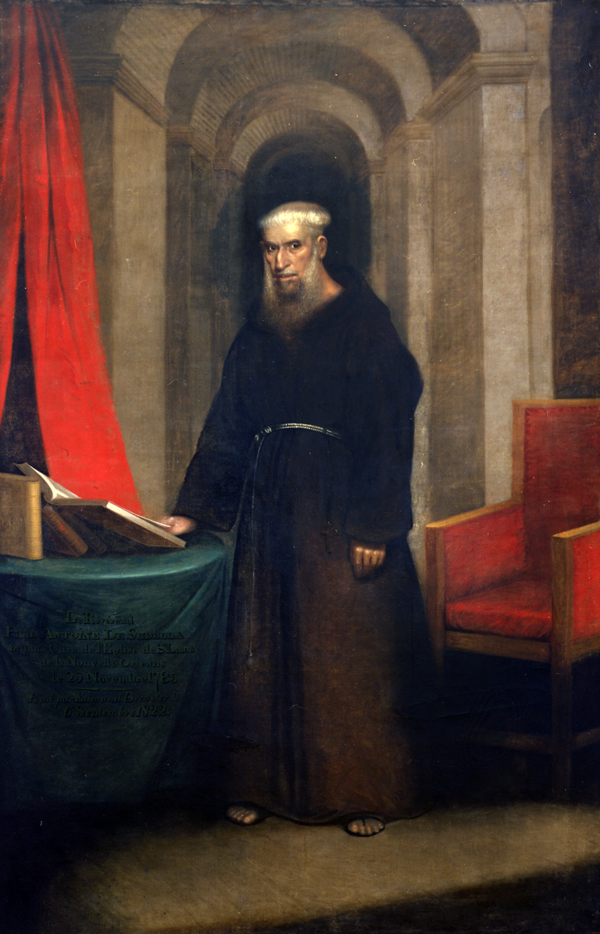Edmund Brewster
Edmund Brewster arrived in New Orleans from Philadelphia in 1819 and was recognized immediately as a talented young artist.

Courtesy of Louisiana State Museum
Père Antoine at Age Seventy-Four. Brewster, Edmund (Artist)
Edmund Brewster was born in England and immigrated to Philadelphia, Pennsylvania, sometime before 1818. The city was the art center of the United States in the early nineteenth century, home to Thomas Sully, Charles Willson Peale, Benjamin Henry Latrobe, Gilbert Stuart, and John Vanderlyn. Philadelphia was also home to the country’s first permanent art school, the Pennsylvania Academy of the Fine Arts. Brewster first advertised in New Orleans in 1818, noting that he painted landscapes. In 1819, Brewster won acclaim for his copy of Gilbert Stuart’s Landsdowne portrait of George Washington, which was commissioned to hang in the session hall of New Orleans City Council. The same year, he held an exhibition of paintings at Maspero’s Coffee House—the first documented one-man exhibition by an artist in the city. Brewster would return each year until 1824. The pinnacle of his career in New Orleans came in September 1822, when he completed his most important commission, an enormous painting of Padre Antonio de Sedella. Better known as Père Antoine, the full-length portrait depicts former grand inquisitor and parish priest at St. Louis Cathedral, dressed in humble Franciscan robes. The painting was probably the first to be reviewed in the New Orleans press.
Brewster seems to have painted a bust-length portrait of Sedella before completing the large canvas for the cathedral. He also created an engraving of Père Antoine in 1821, perhaps the earliest printed portrait created in Louisiana.
Although the details of his early career are obscure, it is unlikely that Brewster developed such a sophisticated style without apprenticeship or training at any of the several academies and drawing schools in England. His paintings suggest familiarity with Sir Thomas Lawrence and George Romney, as well as John Wesley Jarvis, and especially Gilbert Stuart. Still, Brewster was not an artist of the highest ability. His compositions tend to be slightly awkward, like those of Peale or John Trumbull.
Brewster’s careful attention to detail and competent, straightforward style, not to mention the scale of his most celebrated work, attracted attention in New Orleans. At the same time, Jarvis and Matthew Harris Jouett were achieving success with a much more fluid, emotive English style, more sophisticated than Brewster’s. Louis-Antoine Collas was also introducing a more subdued French neoclassicism in Louisiana.
In 1828, Brewster returned to Philadelphia, where his is listed in city directories until 1849. Brewster continued to paint portraits in a conservative style and designed at least a handful of prints. With the exception of his high-profile period between 1818 and 1822 in New Orleans, Brewster was an unremarkable but historically important artist, much like his Philadelphia peer Bass Otis.
